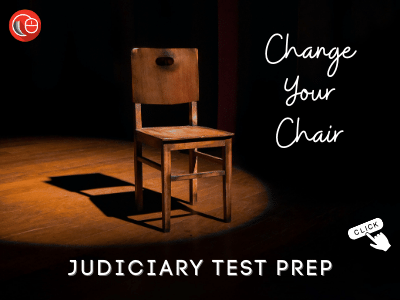This article is written by Jaagatjot Singh, pursuing Diploma in US Corporate Law and Paralegal Studies from LawSikho.
Table of Contents
Introduction
The dying declaration has its foundation in the maxim ‘Nemo Moriturus Praesumitur Mentire‘, which means ‘a man will not meet his maker with a lie in his mouth’. This declaration is also called Leterm Mortem, i.e. words said before death. In layman’s terms, a dying declaration is a declaration or statement made by the person who knows his death is certain. He/she states his or her cause of death in this declaration, which is why it is said that one would not lie on his/her deathbed. This has great significance in the court of law as it leads to some serious accusations against the defendant. A dying deposition is sometimes confused with, the concept of dying declaration but these both are distinct with just one thin line between them, which is the fact that a ‘dying deposition’ is recorded by a Magistrate in the presence of the lawyer of the accused whereas ‘dying declaration’ usually recorded in the presence of Magistrate and doctors to eliminate chances of false implication.
If the dying declaration was not admissible in the courts, it would have exonerated several offenders of their heinous acts. However, in some cases, admissibility of this declaration could also lead to a prejudicial decree against someone innocent. Admissibility of the dying declaration as a shred of evidence is in itself a strong course of action taken by the courts to grant justice to the deceased, and there lie no chances of cross-examination, as this could only happen in exceptional circumstances. Recognition of this law under English law and in what cases the dying declaration plays a significant role will be understood as we move further in this article.

Dying declaration under Indian Law
Dying declaration is defined under Section 32(1) of the Indian Evidence Act, which states-
“When a person makes the statement as to the cause of his death, or as to any of the circumstances of the transaction which resulted in his death, in cases in which the cause of that person’s death comes into question. Such statements are relevant whether the person who made them was or was not, at the time when they were made, under the expectation of death, and whatever may be the nature of the proceeding in which the cause of his death comes into question”.
How should a dying declaration be made?
Dying declaration can be made through writing, orally, through actions, or in the form of a narrative. But it is preferred that it should be written in the vernacular, which the patient understands and speaks. Usually, it is in the form of questions and answers, which requires extra vigilance to avoid errors while recording the answers.
Dying declaration under English Law
A dying declaration is considered as evidence under English Law but only in cases of homicides and not in civil cases or other criminal matters. It is considered that the declaration made under articulo mortis should not be neglected but considered with respect.
Dying declaration is recognized only in homicides for the following reasons:
- That the deceased would have been the only eyewitness to the crime.
- It is in the public good to punish the offender for manslaughter.
- The apprehension of impending death is considered equivalent to a situation under oath, as the maxim states- one doesn’t die with a lie on their lips.
It is paramount for the person making the declaration to die, as death is the subject of the charge. In contrast, in India, it is not mandatory for the person making the declaration to die, as in such a case, the statement made by that person can still be considered a piece of evidence.
Hearsay evidence is not accepted in the court, but the dying declaration is an exception to this rule
As the name suggests, hearsay means something that is not directly heard and has no credibility until proven with facts. A statement that is provided under hearsay has no merit in the law until proven, as this is known to be second-hand information.
Section 60 of the Indian Evidence Act mentions clearly that oral evidence must be direct. The person should directly see, hear, or sense the fact to allow it to be admissible as evidence in court. However, hearsay evidence is clearly secondary evidence.
Generally, hearsay evidence is not admissible, however, there are some exceptions under which it is admissible. One of such exceptions is the dying declaration as the information provided by the deceased on his death bed cannot be validated. If the same declaration is completely disregarded, it would lead to a miscarriage of justice. Hence, this exception is a must. To avoid any tampering with the declaration by the witnesses, it is made sure that the witness during the cross-examination does not try to hide or lie as they would be liable under the offence of perjury. But such evidence can still impact the proper functioning of the court while passing a decree because such evidence is neither given under oath, nor the veracity of the matter can be analyzed via cross-examination, nor can the maker be questioned.
Evolution of evidentiary value of dying declaration
The dying declaration has evolved with time and has been taken as evidence by the Court even in such cases where the evidence was available in various forms like written, oral, or signs.
To begin with, came the case of K. R. Reddy v. Public Prosecutor [1976 (3) SCC 618], the court observed :
1. The dying Declaration is admissible as evidence under Section 32 by the Court and is not made under oath, making it impossible to validate the same via cross-examination.
2. The court has to apply the scrutiny and the closest circumspection of the statement before acting upon it.
3. Great solemnity and sanctity is attached to the words of a dying man because a person on the verge of death is not likely to tell lies nor to connect a case to implicate an innocent person. Yet, the court has to be on guard against the statement of the deceased being a result of either tutoring, prompting or a product of his imagination.
4. The court should be satisfied with the declaration and it should be ensured that force or threat did not influence the statement made by the deceased and the person was fully conscious while making the statement.
In Sham Shankar Kankaria v. the State of Maharashtra (2006), the Hon’ble Apex Court held that “The situation in which a person is on death bed is so solemn and serene when he is dying that the grave position in which he is placed, is the reason in the law to accept the veracity of his statement. It is, for this reason, the requirements of oath and cross-examination are dispensed with. If the dying Declaration is excluded it will result in a miscarriage of justice because the victim being generally the only eyewitness in a serious crime, the exclusion of the statement would leave the court without a scrap of evidence”
In State v. Maregowda (2002 (1) RCR (Criminal) 376 (Karnataka), it was held that a suicide note is also considered to be evidence under Section 32(1) as a dying declaration.
In the case of Pakala Narayana Swami vs Emperor (1939), even the statement by the wife that her deceased husband had gone running some errands was enough to qualify as a dying declaration as in this case, the wife stated that ‘her husband had gone to Berhampur to take payment’ and this was considered as a dying declaration.
This case was crucial as it stated that even the circumstances or documents or statements that act as collateral to the case can also be admitted under the evidence as a dying declaration.
In a very recent case of Satpal vs State of Haryana (2021), also known as the Kerosene oil Burn case, the husband lit his wife on fire after an argument by pouring kerosene on her. After being hospitalized due to 90% of her body having suffered burns, she was only able to state the incident. Because of the statement given by the wife in such a critical condition, the Court admitted her dying declaration as evidence.
During the admissibility of this statement, questions were raised by the accused regarding the authenticity of the statement as the victim’s relatives were also present and it was possible that under their influence his wife accused him of the crime. Despite such objections, the court stood firm on its decision to include this declaration as evidence and punish the accused.
The same happened during the Nirbhaya rape case in 2012 and during the Hathras rape case as well wherein a threatening letter by the upper caste accused was also considered a dying declaration by the court.
Dying declaration cannot always act as the sole factor to punish the accused as stated in the first case reference. The courts have to adhere to the surrounding circumstances as well to understand the credibility of such a Declaration. In Jayamma & Anr. v/s. State of Karnataka, the SC reversing the High Court’s decision refused to consider the dying declaration of the victim as there were plenty of loopholes during the investigation and while recording the declaration proper measures were not taken either by the police or the doctors. And the court stated that: “When the dying declaration has been recorded in accordance with the law, and it gives a cogent and plausible explanation of the occurrence, the Court can rely upon it as the solitary piece of evidence to convict the accused.”
Factors to keep in mind while recording a dying declaration
1. Recording by a Judicial Magistrate:
If the victim fears that his death is impending and if the police officers also believe that the victim would not survive till the trial, they may apply to the Chief Judicial Magistrate for recording the dying declaration.
2. Declarant should be fit and conscious before making the statement:
The Judicial Magistrate should satisfy himself that the victim is in a fit condition to be able to give a statement and should also get a fitness certificate from the doctor for validation.
3. Signatures or thumb impressions should be obtained as a matter of verification by the victim.
4. In cases where the recording is done by the police officers or the medical examiner, they should mention the state of mind of the victim at the beginning of the recording.
5. The dying declaration must be complete and the objective should be to know the cause of the attack or death.
6. The declaration should not be concerned with someone else’s death but one’s own and there should not be more than one declaration made, as if they contradict each other, the declaration would lose its value.
7. The statement should not be based on influence or coercion and should be spontaneous. Declaration recorded in question-answer form is quite helpful and helps know the cause of the attack.
Conclusion
Dying declarations have acted as weapons in the hands of those victims whose lives were ruined by someone they knew. They allow one to fight for justice even during the last few moments of their life. In recent years, Section 32(1) of the Evidence Act has helped various victims get justice, such as in the Nirbhaya gang-rape case, Hathras gang rape case, dowry death cases etc. The admissibility of the dying declaration no doubt raises questions in certain cases where the accused is actually innocent but as every coin has two sides, this doesn’t allow the judiciary to ignore the dying declaration as a piece of crucial evidence.
Keeping aside the religious justifications such as the belief that death in itself acts as an oath for a person and one does not meet his maker with a lie in his mouth, the courts should scrutinize the circumstances of the case before coming on to a conclusion. If in the case where the declaration seems doubtful, the court can refuse to admit the same. There have been instances in cases of domestic violence where sometimes even if the victim’s cause of death is different, they still tend to get back at their violent spouse by accusing them for their death as a means to exact revenge which, in many instances, is considered to be genuine by the court considering the history of violence. This is why it is of paramount importance for the judges to get into deeper facts and phase out the false accusations or statements in the declaration, if any.
References
- https://www.repository.law.indiana.edu/cgi/viewcontent.cgi?article=1004&context=facpub
- https://www.theleaflet.in/supreme-court-clarifies-law-on-dying-declaration/
- https://delhihighcourt.nic.in/writereaddata/upload/CourtRules/CourtRuleFile_P9S0NL6U.PDF
- https://districts.ecourts.gov.in/sites/default/files/gundla%20Radhika%20Article%20by%20II%20ADM%20-%20Cogency%20OF%20Dying%20Declaration.pdf
- https://www.thehindu.com/news/national/no-rigid-standard-for-acceptance-or-rejection-of-dying-declaration-says-supreme-court/article34176669.ece
Students of Lawsikho courses regularly produce writing assignments and work on practical exercises as a part of their coursework and develop themselves in real-life practical skills.
LawSikho has created a telegram group for exchanging legal knowledge, referrals, and various opportunities. You can click on this link and join:
https://t.me/joinchat/L9vr7LmS9pJjYTQ9
Follow us on Instagram and subscribe to our YouTube channel for more amazing legal content.
 Serato DJ Crack 2025Serato DJ PRO Crack
Serato DJ Crack 2025Serato DJ PRO Crack












 Allow notifications
Allow notifications



